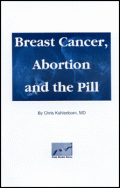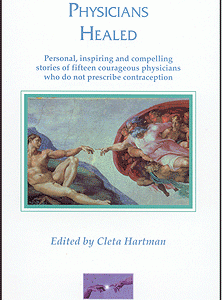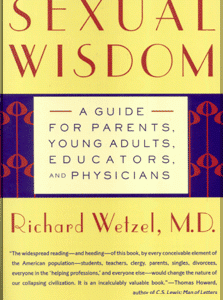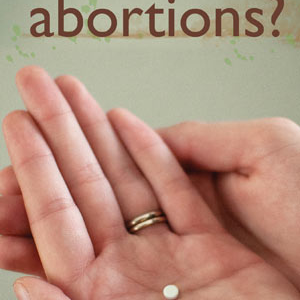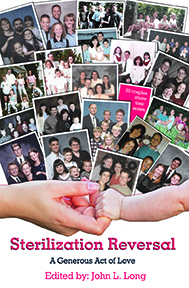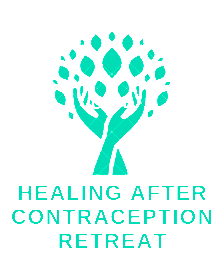A booklet version of this publication is also available. You may print and distribute this freely provided that it is printed without alteration.
For the past year, One More Soul has been privileged to work with Dr. Chris Kahlenborn in publishing his new book: Breast Cancer, Its Link to Abortion and the Birth Control Pill . This book is the culmination of seven years the author spent reviewing and analyzing more than 500 research studies and related works. It is very timely because of the breast cancer epidemic, which currently threatens every woman.
In the concluding chapter of Dr. Kahlenborn’s book, he summarizes his conclusions and provides recommendations for action. The substance of that chapter is presented here, modified slightly to improve readability as a separate article.
Conclusions
General
Breast cancer is the worldwide leading cancer for women and is the most common cause of cancer death for U.S. women age 20-59. In the U.S. about 175,000 women are diagnosed with breast cancer annually and more than 43,000 women die from this cause. Both induced abortion and oral contraceptive use, especially at a young age, increase a woman’s risk for developing breast cancer. The U.S. has one of the highest rates of induced abortion and oral contraceptive use in the world, especially in young women. The breast cancer risks from abortion and hormonal contraceptive use act independently of each other. They also reinforce each other and have a cumulative effect if combined with other risk factors such as a family history of breast cancer, nulliparity (never having given birth), late menopause, early menarche (early onset of menses), greater age at first birth, a previous occurrence of breast cancer, etc. The breast cancer rate in the U.S. is rising, and these factors may result in higher increases as the latent period (the time it takes for cancer to develop after exposure to a risk factor) for these women is completed. Calculations based on the available studies indicate that induced abortion may result in over 46,800 additional cases of breast cancer in the U.S. annually, with even more cases added due to hormonal contraceptive use.
Black Women
Breast cancer in the U.S. is more prevalent in young black women than in white women of equivalent age, and is the second leading cause of cancer death (after lung cancer) among black women. This may be a consequence of more extensive hormonal contraceptive use (eg, Depo-Provera) and/or a greater prevalence of abortion among young black women. Black women who develop breast cancer generally have more aggressive cancers resulting in a reduced life expectancy.
Abortion
When research studies on a particular topic are assembled into one set of conclusions, the product is called a “meta-analysis.” The most meticulous and comprehensive meta-analysis to date on the relation of breast cancer to induced abortion was done by Joel Brind, PhD, in 1996 [1]. Brind concluded that women who have an abortion prior to their first full-term pregnancy have a 50% increased risk of developing breast cancer, while those who have an abortion after their first full-term pregnancy have a 30% increased risk.
Janet Daling noted in 1994 [2] that women younger than 18 who had an abortion experienced a 150% increased risk of developing breast cancer. This risk increased to 800% if a woman had her abortion between the 9th and 24th week of pregnancy.
Comparing the maternal mortality risk of childbirth to that from abortion, when proper weight is given to the increased risk of breast cancer and suicide due to abortion, and the decreased risk of ovarian cancer with full-term pregnancy, abortion is many times more hazardous to the mother in the long-run than carrying a child to term.
Family History of Breast Cancer
Women who have a family history of breast cancer and choose to have an abortion are at very high risk of developing breast cancer. Andrieu et al (1994) [3] found that women who have a family history of breast cancer and who had two or more induced abortions have a 600% increased risk of breast cancer as compared to the rest of the population. Daling et al (1994) [2] noted that women who had an abortion prior to age 18 and had a positive family history of breast cancer had an infinitely increased risk of developing breast cancer compared to young women
who had a family history of breast cancer and had not had an abortion. She also noted that women who were 30 or older at the time of their abortion and had breast cancer in their family history had a 270% increased risk.
Birth Control Pill
If a woman takes the oral contraceptive pill before her first child is born, she suffers at least a 40% increased risk of developing breast cancer. If she takes oral contraceptive pills for four years or more prior to her first baby, she suffers at least a 72% increased risk according to the meta-analysis by Romieu (1990) [4].
Women who took oral contraceptive pills early in their lives and who develop breast cancer generally develop more aggressive breast cancer and have a poorer prognosis.
Available studies of women who used DMPA (Depo-Provera) show a 190% increased risk of breast cancer in women who used it for 2 or more years prior to age 25. Young black women in the U.S. are at higher risk of breast cancer since they use Depo-Provera more frequently than white women.
Other Cancers
Oral contraceptive pills decrease the risk of uterine and ovarian cancer, but increase the risk of breast, cervical and liver cancer. It is estimated that an additional 40,000 to 80,000 cases of cancer will occur in the U.S. annually when the cumulative effect of oral contraceptives on all cancers is considered.
A summary of studies examining the effect of oral contraceptives on invasive cervical cancer shows the following increased risks: for any use (30%); long-term use (62%); use before age 25 (65%); use before age 20 (80%).
Preventive Factors
Of the many identified risks of breast cancer, several are controllable by behavior: hormone exposure (including hormonal contraceptives), abortion, number of births, age at first childbirth, length of breastfeeding, degree of alcohol use, obesity and radiation exposure.
Natural Family Planning (NFP) methods are available which use no chemicals or surgery and cause no increase in breast cancer risk. Not to be confused with the “rhythm method,” NFP is based on observations of a woman’s cervical mucus and (for some methods) other signs as well. One of the largest research studies of NFP (involving 19,843 women and performed in India by the World Health Organization) showed a pregnancy rate of 0.2 pregnancies per 100 women yearly. [5]
Natural Family Planning methods have been used to diagnose and treat a variety of female reproductive system disorders including infertility. Various medical problems (eg. excessive menstrual cramping and bleeding) can be treated far more safely with less toxic means (eg. magnesium/calcium supplements and/or ibuprofen products).
Natural family planning information is available from a number of national organizations:
The Couple to Couple League 1-513-471-2000
Pope Paul VI Institute 1-402-390-6600
Family of the Americas 1-800-443-3395
Billings Ovulation Method Association 1-888-637-6371
The Augustine Foundation 1-877-554-4637
NW Family Services 1-503-215-6377
National Conference of Catholic Bishops 1-202-541-3240
One More Soul 1-800-307-7685
How Risk Factors are Combined
Women who have had an induced abortion and also use oral contraceptives have a “multiplied risk” of developing breast cancer. For example, Daling [2] noted that women who have an induced abortion prior to age 18 have a 150% increased risk of developing breast cancer, while Romieu et al [4] noted that women who use oral contraceptives for 4 or more years prior to their first full-term birth have a 72% increased risk. According to the multiplier effect, women who are in both of these categories would have a relative risk of 2.5 x 1.72 = 4.3. This represents a 330% increased risk, meaning that women who use the birth control pill for at least 4 years before first birth and who also have an abortion before age 18 have a 330% increased risk of developing breast cancer some time in their lives. Thousands of women meet these criteria.
Recommendations
Prevention of Breast Cancer
A major educational effort is needed to raise awareness in physicians, pharmacists, nurses, attorneys and especially the general public regarding controllable risk factors for breast cancer: avoidance of factors which increase risk as well as use of factors which reduce risk. Women must be informed of the risks of both hormonal contraceptives and induced abortion especially when they have additional risk factors such as a family history of breast cancer, being less than 18 years of age, or being a black woman.
Women need to be taught natural family planning methods, none of which increases cancer risk. Women must be informed of practices that reduce breast cancer risk such as long-term breastfeeding, bearing a child at a young age, and bearing more than one child. The use of Vitamin A may be of benefit, though this should be avoided by women who could become pregnant as it may (rarely) cause birth defects.
Women with Identified Breast Cancer Risks
Women who have had induced abortions and/or used oral contraceptive pills, especially at an early age, need lifelong physician monitoring. They (and all women) should consistently perform self-breast exams. They should also seriously consider protective strategies such as extended breastfeeding and/or use of vitamin A. Tamoxifen and drugs similar to it have been found to decrease the risk of breast cancer in certain groups of women. Reports by the Eli Lilly company stated that Evista (raloxifene), an artificial hormone given to some postmenopausal women to prevent osteoporosis, may reduce breast cancer risk (Company Press Release, Eli Lilly, 12/11/98). Neither drug should be given to pre- or peri-menopausal women who might conceive. Additional exposure to risk factors such as repeat abortion or additional hormone (eg, contraceptive) use should be avoided.
Women with Breast Cancer
Women who already have breast cancer should be treated with the appropriate combination of surgery and/or radiation and/or chemotherapy and/or hormonal therapy. They should ask their
physicians about the effectiveness of vitamin A, and should be encouraged to ask about new treatments such as “virus infecting tumor cells,” which are currently being studied, as well as new medicines which target specific proteins or genes that a breast cancer cell may produce (eg, the drug Herceptin). Herceptin has been used to treat a type of breast cancer known as HER-2/neu, which is more common in women who have used oral contraceptive pills at an early age (Ranstam, 1992) [6].
Pregnancy and Breast Cancer
If a woman with breast cancer is pregnant, the baby should not be aborted as abortion markedly reduces the mother’s life expectancy (Clarck and Chua, 1989) [7].
Public Policy
Breast cancer and other medical problems caused by hormonal contraceptives and/or induced abortion represent a serious and growing health problem. The government, health professionals as a body and the research establishment have not responded well to this situation in which millions of lives are at stake. It is critical that the responsible parties address this pressing crisis. Eventually public opinion and/or court action will make this unavoidable.
Current U.S. domestic and foreign policy which promotes hormonal contraceptive use and induced abortion must be reversed in light of the drastic effects these risks have on the lives of women. The long-term effects of each risk factor have likely not yet been realized since the full latent period has not passed for many women. As the health consequences of hormonal contraceptive use and induced abortion become evident to the citizens of the affected countries, the good will of the major promoters will be questioned and their credibility undermined. It is time for a major reassessment and restructuring of our policy on these matters. An apology to the affected countries and their people is also long overdue.
Individual Women
Because the government, the media, the medical establishment, and the research community have failed to educate women about these health risks, it is necessary for individual women to inform themselves of the risks. It is possible that women can curtail or even reverse the epidemic of breast cancer that currently threatens them by avoiding the hazardous risks of induced abortion and hormonal contraception and by instead adopting positive strategies which lower breast cancer risk. Although this would involve a definite cultural shift, there is little doubt that thousands of lives would be saved in the long run.
References
- Brind J, Chinchilli M, et al. Induced abortion as an independent risk factor for breast cancer: a comprehensive review and meta-analysis. J Epidemiol Community Health. 10/ 1996; 50: 481-496.
- Daling J, Malone K, et al. Risk of breast cancer among young women: relationship to induced abortion. JNCI. 1994; 86: 1584-1592.
- Andrieu N, et al. Familial risk of breast cancer and abortion. Cancer Detection and Prevention. 1994; 18: 51-55.
- Romieu I, Berlin J, et al. Oral contraceptives and breast cancer. Review and meta-Analysis. Cancer. 1990; 66: 2253-2263.
- Ryder RE. “Natural Family Planning”: Effective birth control supported by the Catholic Church. Br Med J. 1993; 307: 723-726.
- Ranstam J et al. Oral contraceptives and breast cancer. Dissertation Abstracts International. 1992; 53: 705C.
- Clarck RM, Chua T. Breast cancer and pregnancy: the ultimate challenge. Clinical Oncology. 1989; 1: 11-18.
Dr. Chris Kahlenborn is an internist in private practice in Altoona, PA. Dr. Kahlenborn is the author of Breast Cancer, Its Link to Abortion and the Birth Control Pill upon which this booklet is based.
